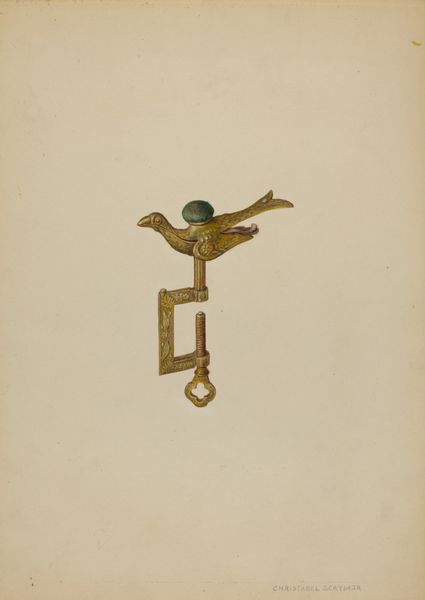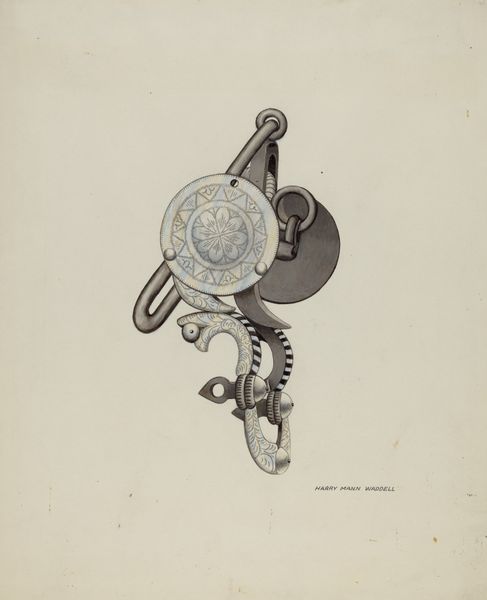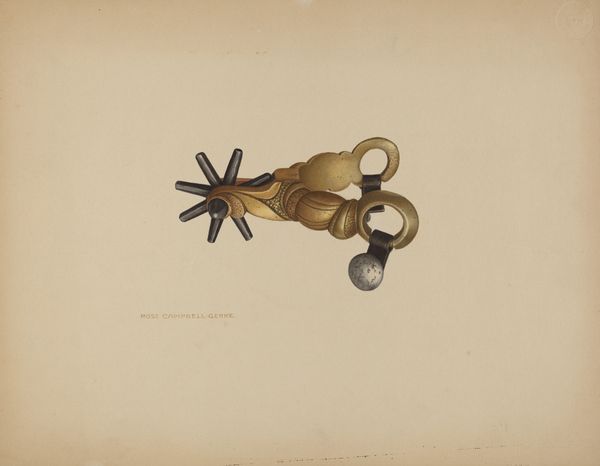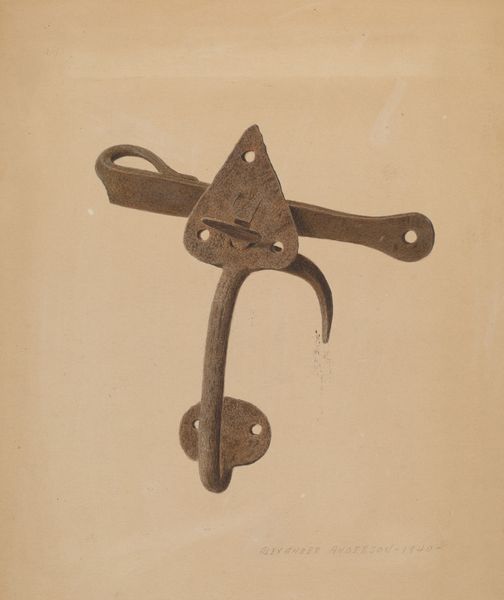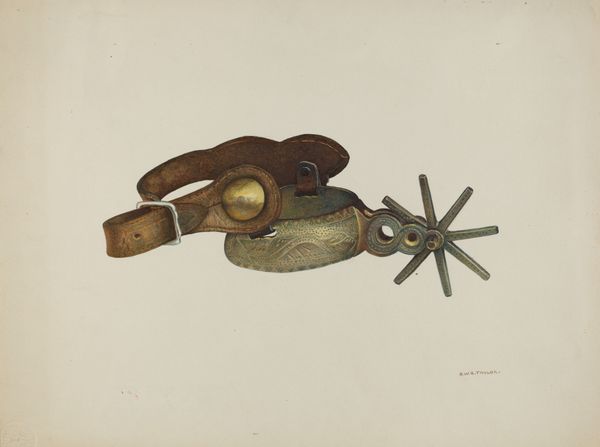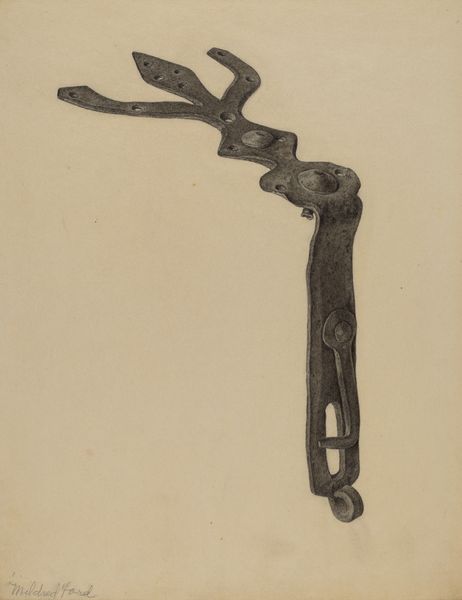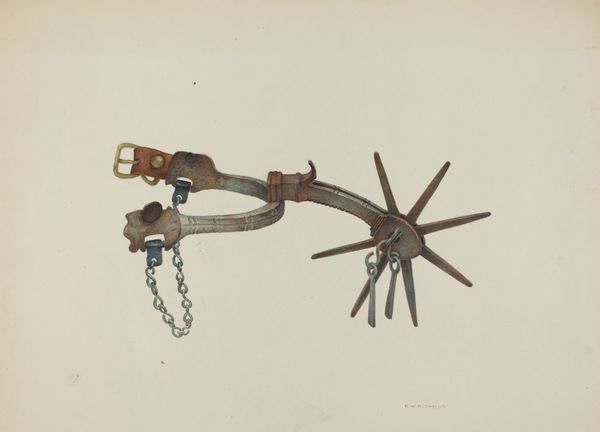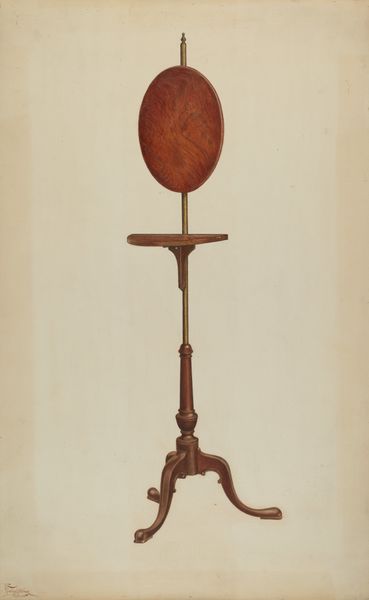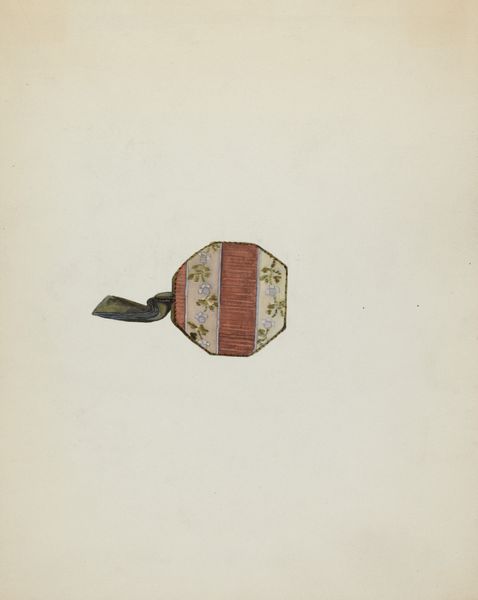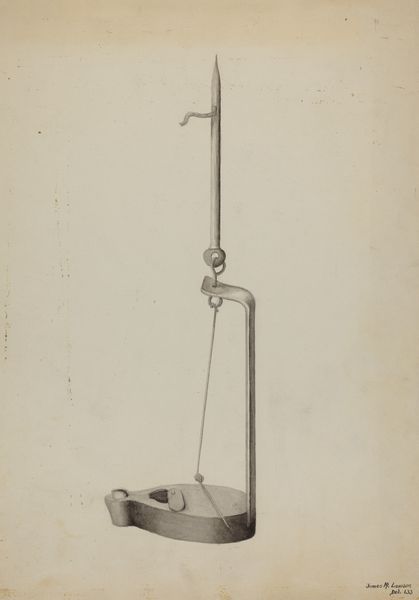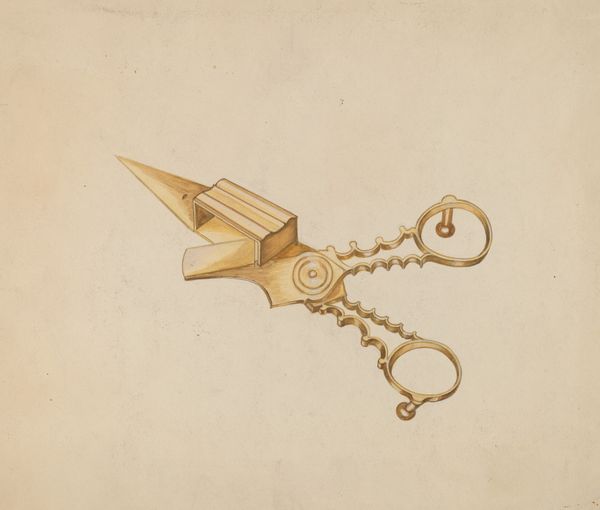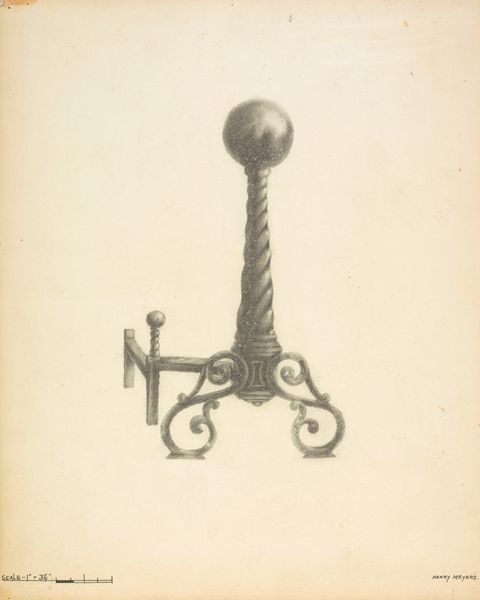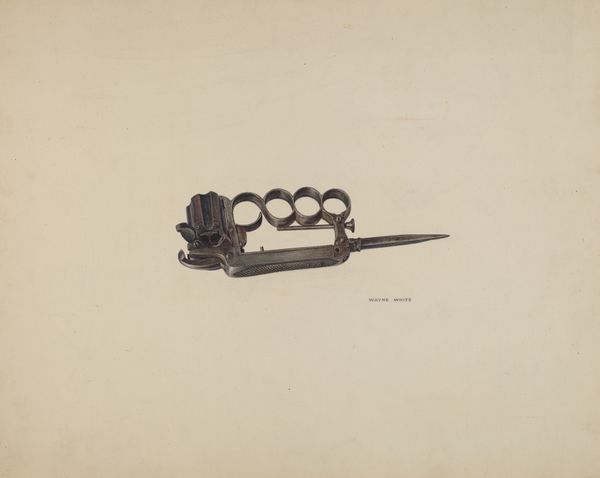
drawing, watercolor
#
drawing
#
water colours
#
charcoal drawing
#
watercolor
#
watercolour illustration
#
watercolor
#
realism
Dimensions: overall: 34.8 x 24.4 cm (13 11/16 x 9 5/8 in.) Original IAD Object: 3 5/8" high; 2" wide
Copyright: National Gallery of Art: CC0 1.0
Editor: This is Robert Clark’s "Sewing Bird," a watercolor and charcoal drawing made sometime between 1935 and 1942. It's a very delicate rendering of what seems to be a small, ornate sewing clamp. I find the object itself so intriguing. What can you tell me about how this piece might fit into the art of its time? Curator: That's a great question. Realism, as noted, provides the art historical frame, but it's crucial to think about context. What's the social role of an image like this depicting a sewing tool? Who would have commissioned or appreciated such a rendering during the late 1930s and early 40s? Editor: Perhaps it's a nostalgia piece? A look back at domestic crafts during a period of immense social upheaval? The Great Depression and looming war, maybe the artist felt a need to capture something that represented stability? Curator: Precisely. How does the very act of meticulously depicting a utilitarian object, often associated with women’s work, elevate its status? Could this detailed realism be interpreted as a quiet commentary on the value of everyday objects and domestic skills during an era defined by industrialization and potential conflict? What might a museum's decision to display this work today say about the museum's views about domestic life? Editor: So the artwork becomes not just about the bird but about the role of women and the dignity of their work at a time when social roles were rapidly changing. Curator: Exactly. The painting and its presence here, now, create a historical echo that we can unpack to reveal deeper meanings about value and representation. Think, too, about access: did art education or appreciation serve class or race interests in the time it was made? How do such social and cultural powers act in art worlds and museums? Editor: This gives me a new appreciation for how even a seemingly simple drawing can reflect complex social dynamics. I will be looking more carefully from now on. Curator: Indeed. Every object, every brushstroke, has a story to tell, a history to uncover. And it invites us to consider the social forces that shape both the creation and interpretation of art.
Comments
No comments
Be the first to comment and join the conversation on the ultimate creative platform.
